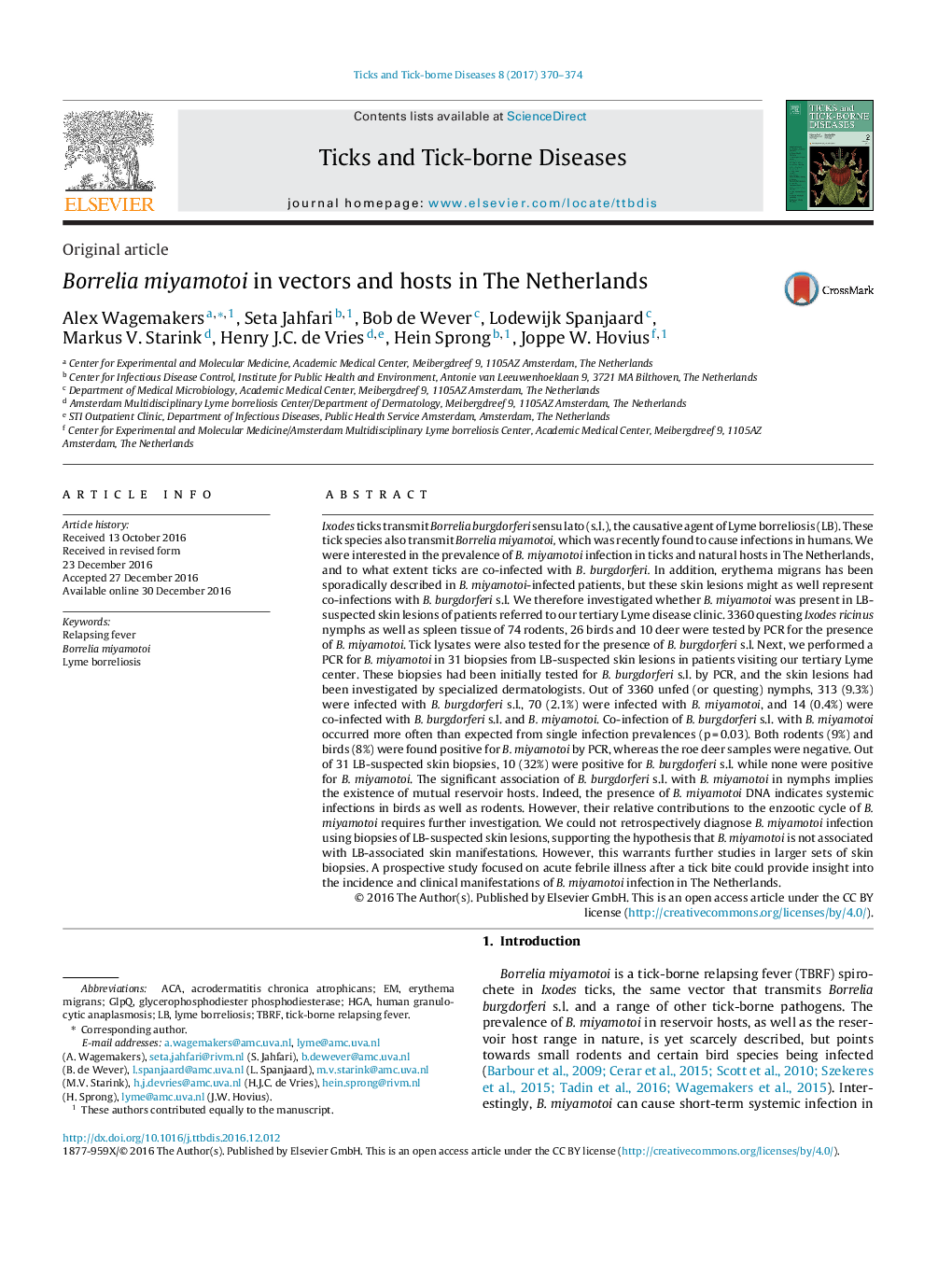| کد مقاله | کد نشریه | سال انتشار | مقاله انگلیسی | نسخه تمام متن |
|---|---|---|---|---|
| 5546353 | 1402741 | 2017 | 5 صفحه PDF | دانلود رایگان |

Ixodes ticks transmit Borrelia burgdorferi sensu lato (s.l.), the causative agent of Lyme borreliosis (LB). These tick species also transmit Borrelia miyamotoi, which was recently found to cause infections in humans. We were interested in the prevalence of B. miyamotoi infection in ticks and natural hosts in The Netherlands, and to what extent ticks are co-infected with B. burgdorferi. In addition, erythema migrans has been sporadically described in B. miyamotoi-infected patients, but these skin lesions might as well represent co-infections with B. burgdorferi s.l. We therefore investigated whether B. miyamotoi was present in LB-suspected skin lesions of patients referred to our tertiary Lyme disease clinic. 3360 questing Ixodes ricinus nymphs as well as spleen tissue of 74 rodents, 26 birds and 10 deer were tested by PCR for the presence of B. miyamotoi. Tick lysates were also tested for the presence of B. burgdorferi s.l. Next, we performed a PCR for B. miyamotoi in 31 biopsies from LB-suspected skin lesions in patients visiting our tertiary Lyme center. These biopsies had been initially tested for B. burgdorferi s.l. by PCR, and the skin lesions had been investigated by specialized dermatologists. Out of 3360 unfed (or questing) nymphs, 313 (9.3%) were infected with B. burgdorferi s.l., 70 (2.1%) were infected with B. miyamotoi, and 14 (0.4%) were co-infected with B. burgdorferi s.l. and B. miyamotoi. Co-infection of B. burgdorferi s.l. with B. miyamotoi occurred more often than expected from single infection prevalences (p = 0.03). Both rodents (9%) and birds (8%) were found positive for B. miyamotoi by PCR, whereas the roe deer samples were negative. Out of 31 LB-suspected skin biopsies, 10 (32%) were positive for B. burgdorferi s.l. while none were positive for B. miyamotoi. The significant association of B. burgdorferi s.l. with B. miyamotoi in nymphs implies the existence of mutual reservoir hosts. Indeed, the presence of B. miyamotoi DNA indicates systemic infections in birds as well as rodents. However, their relative contributions to the enzootic cycle of B. miyamotoi requires further investigation. We could not retrospectively diagnose B. miyamotoi infection using biopsies of LB-suspected skin lesions, supporting the hypothesis that B. miyamotoi is not associated with LB-associated skin manifestations. However, this warrants further studies in larger sets of skin biopsies. A prospective study focused on acute febrile illness after a tick bite could provide insight into the incidence and clinical manifestations of B. miyamotoi infection in The Netherlands.
Journal: Ticks and Tick-borne Diseases - Volume 8, Issue 3, March 2017, Pages 370-374